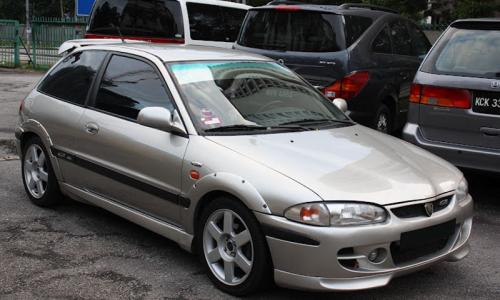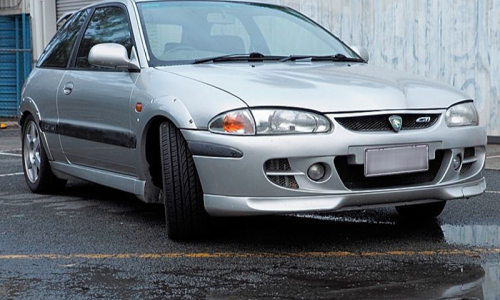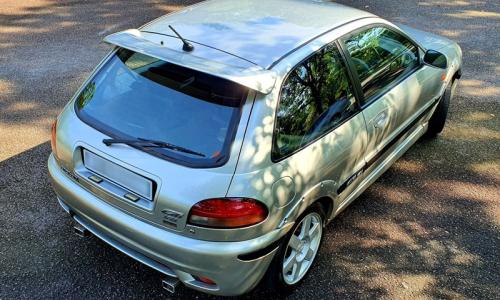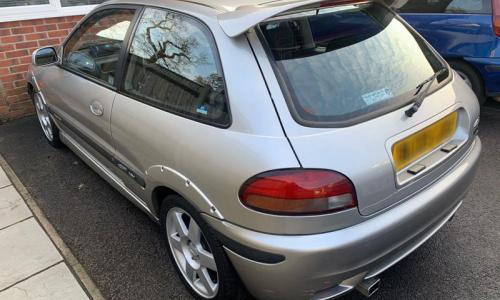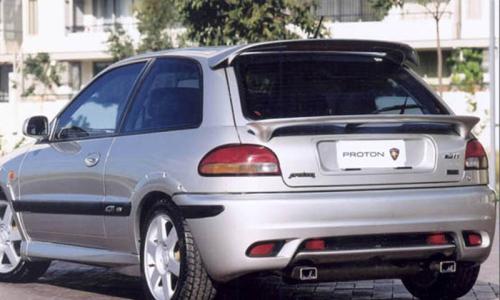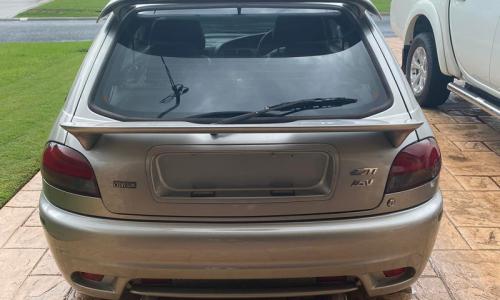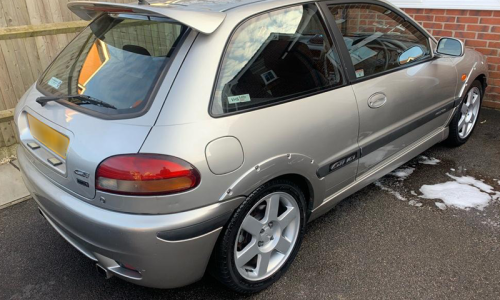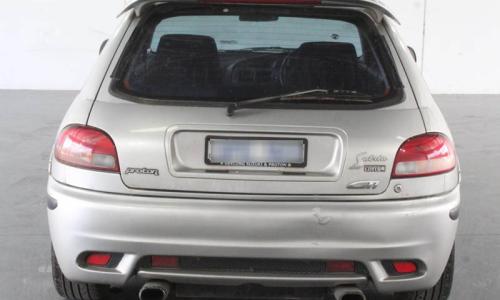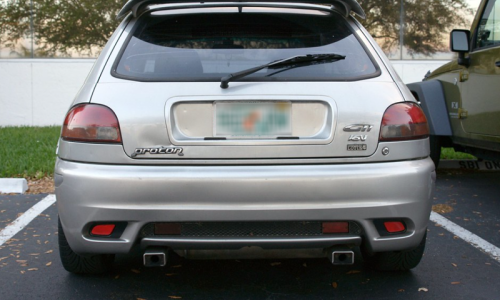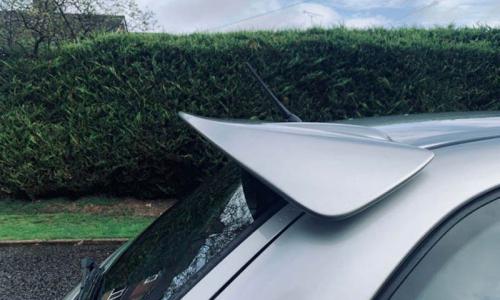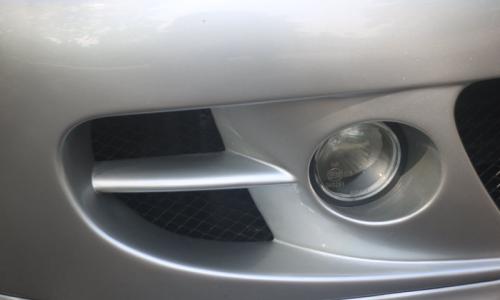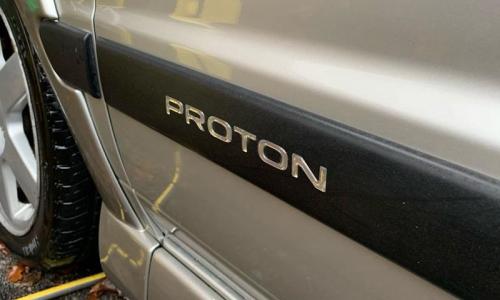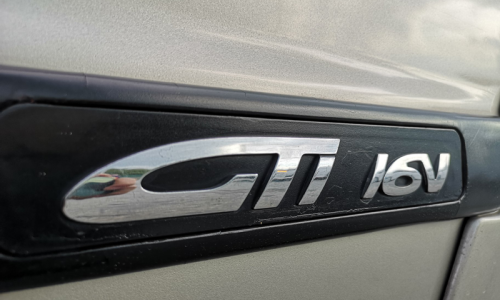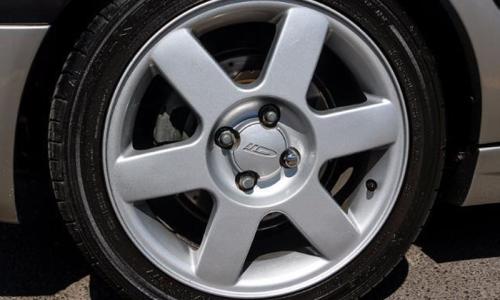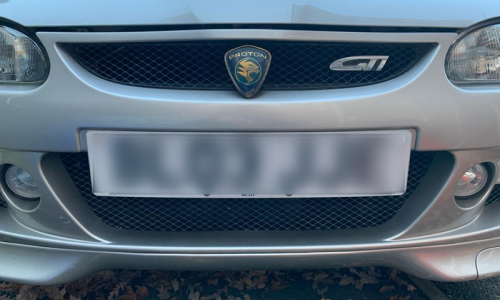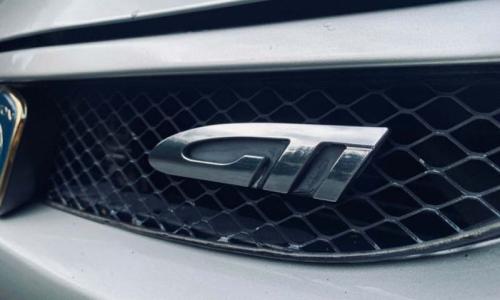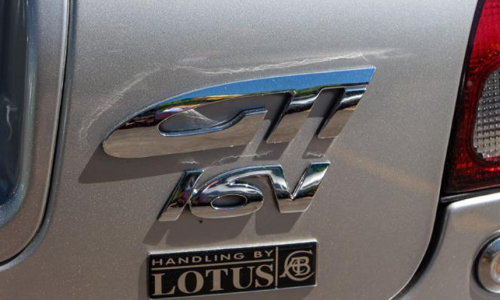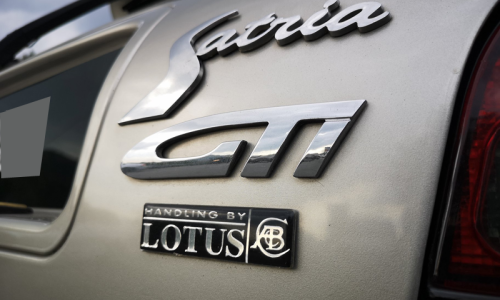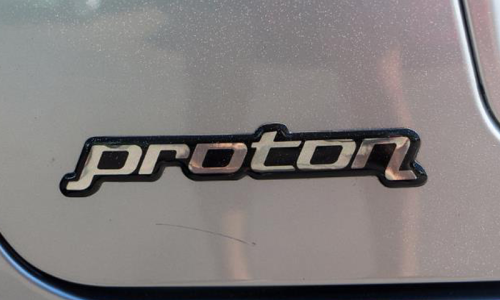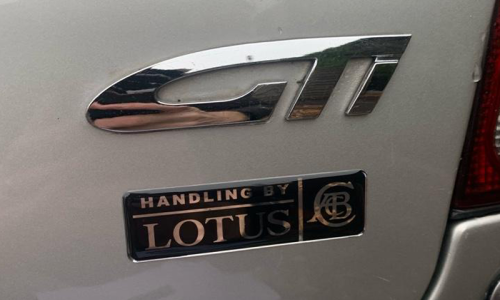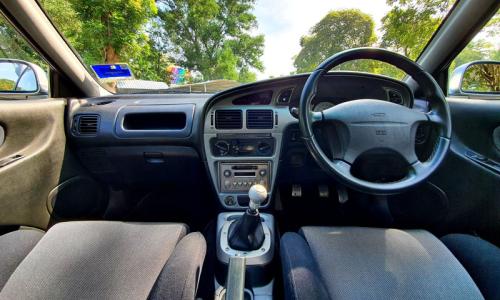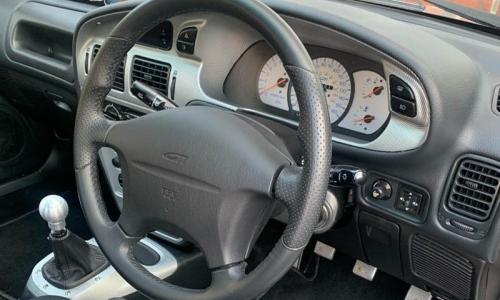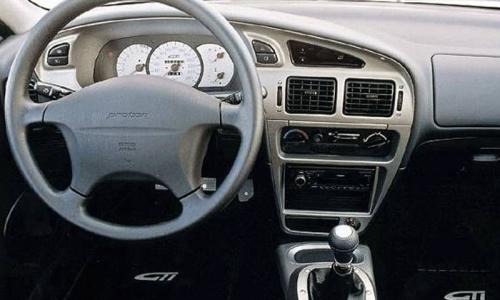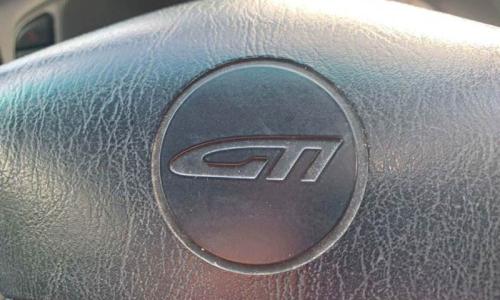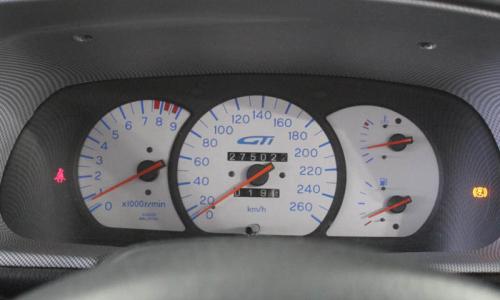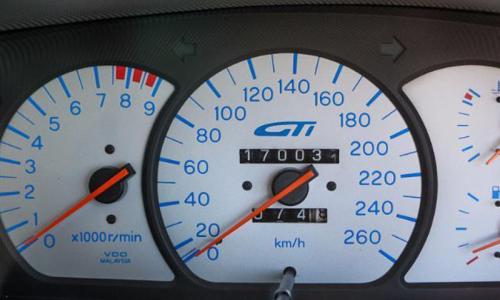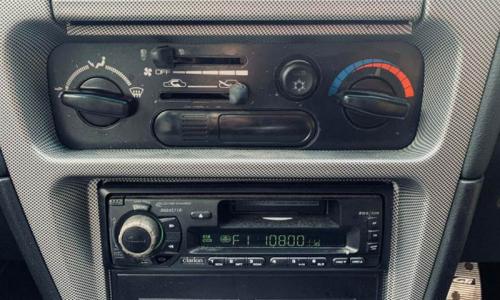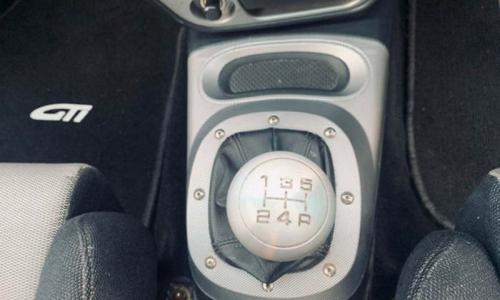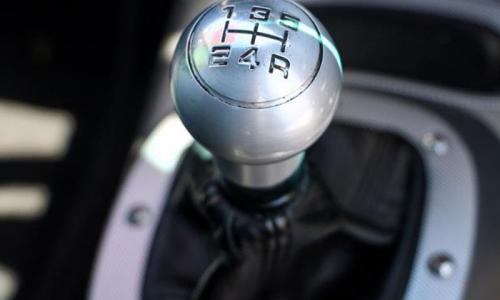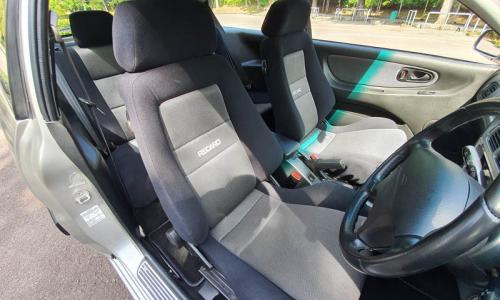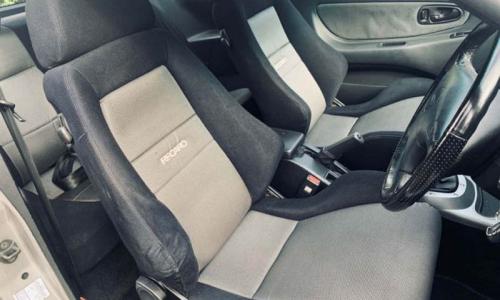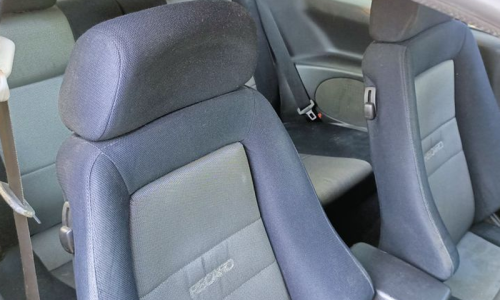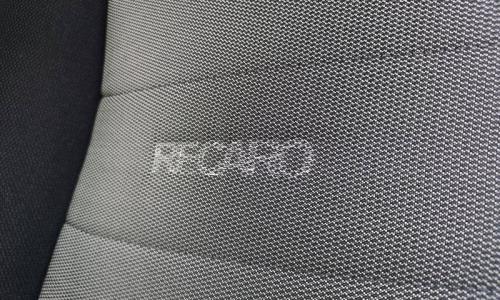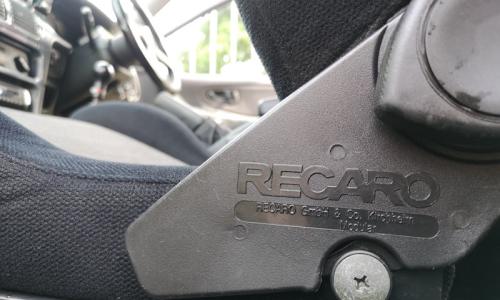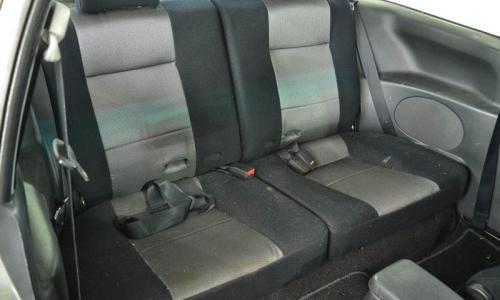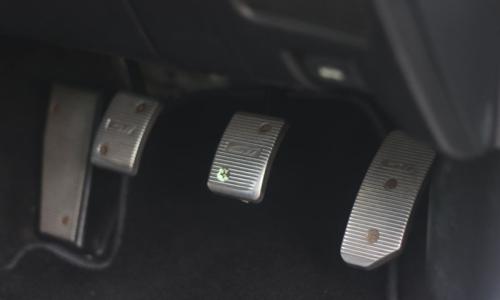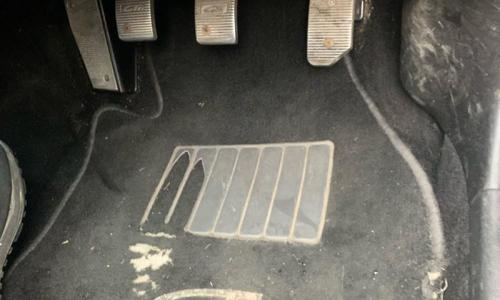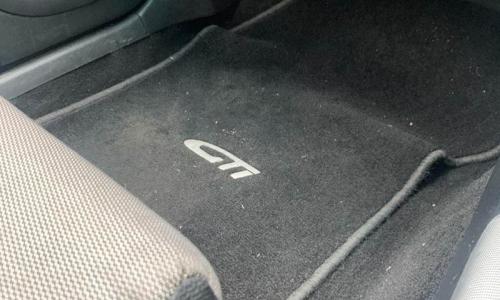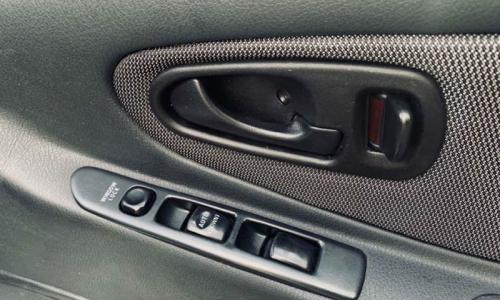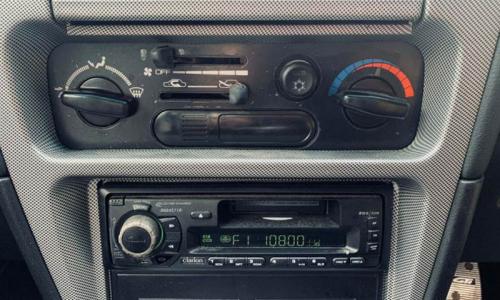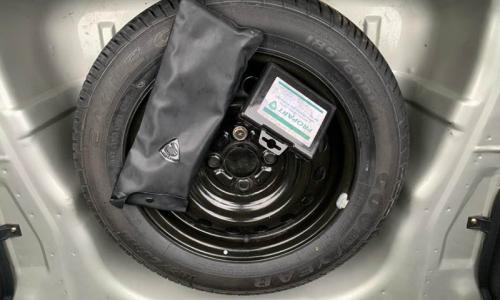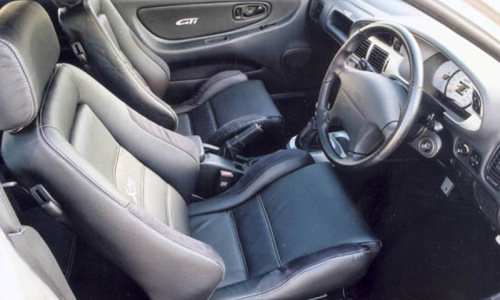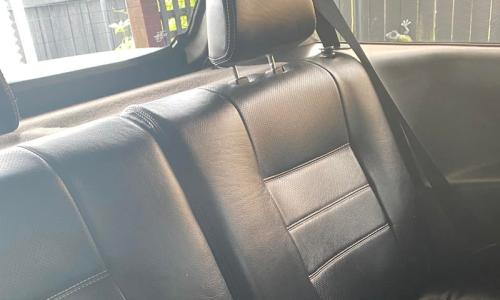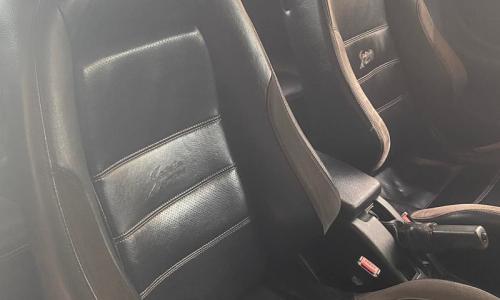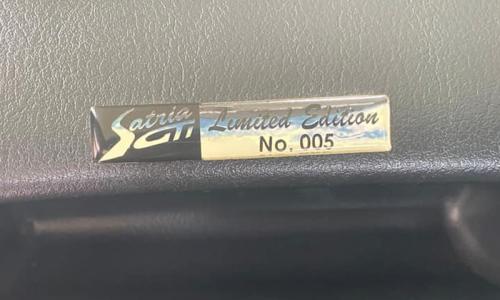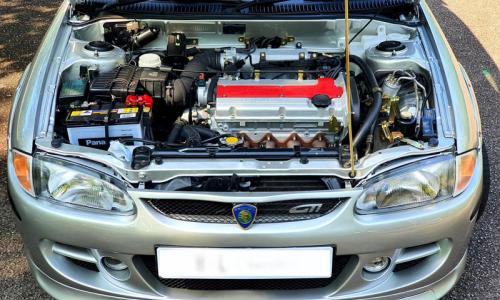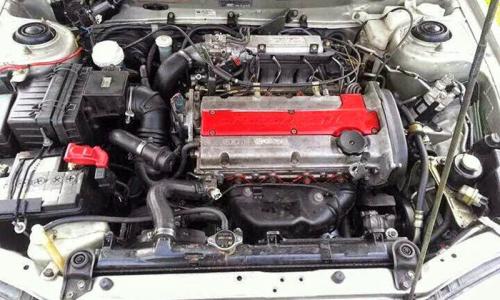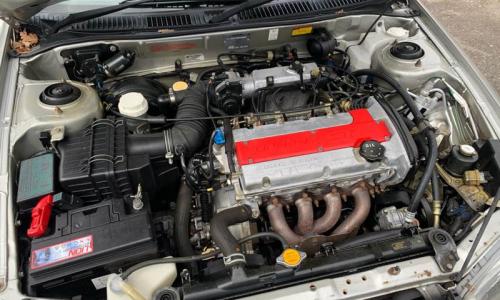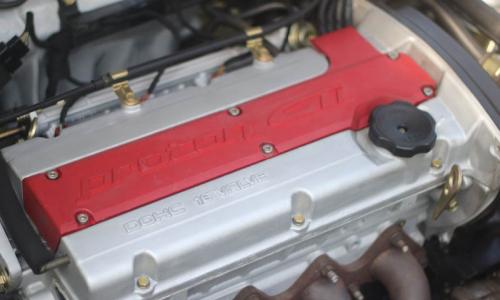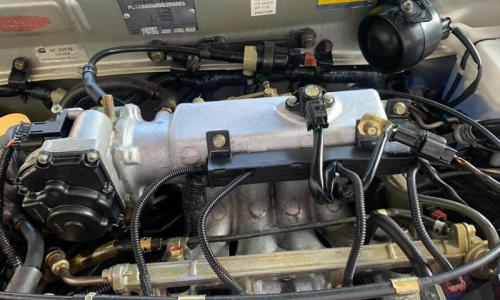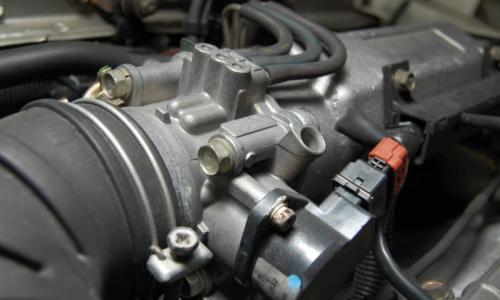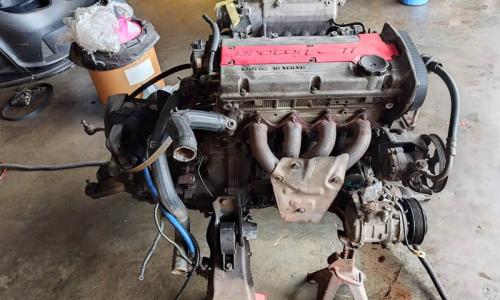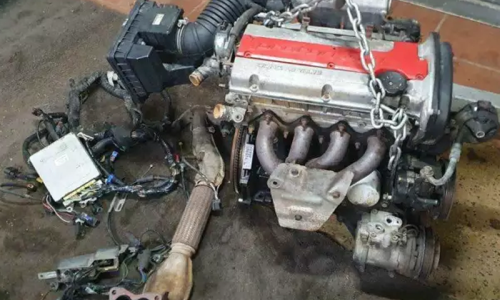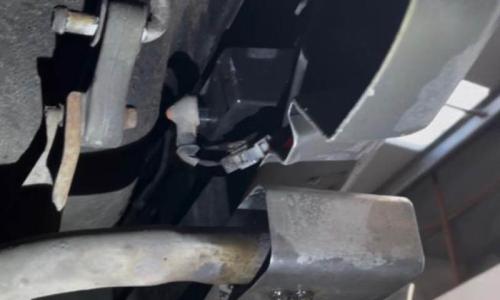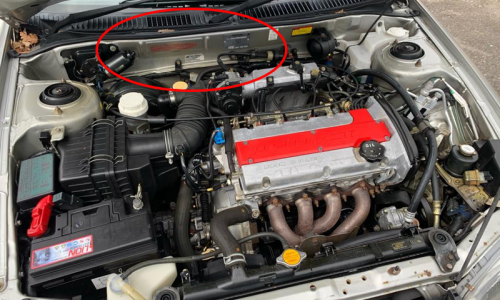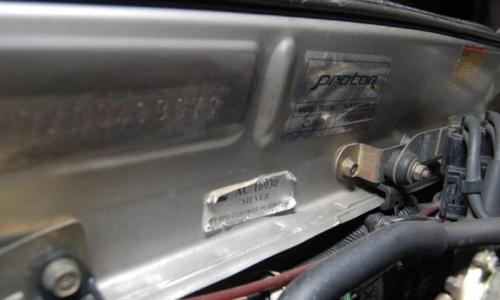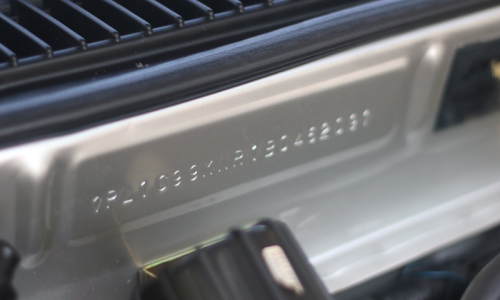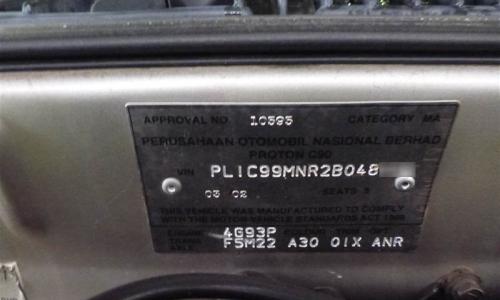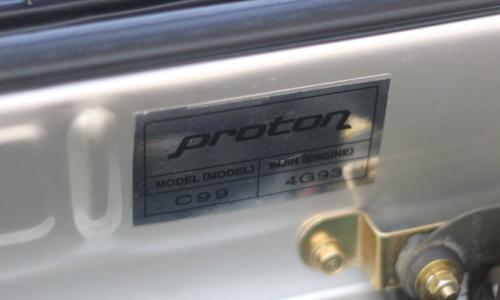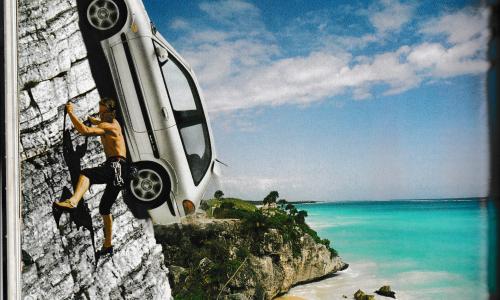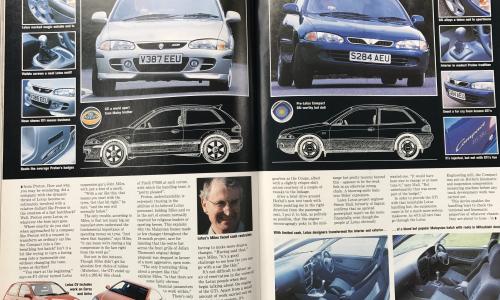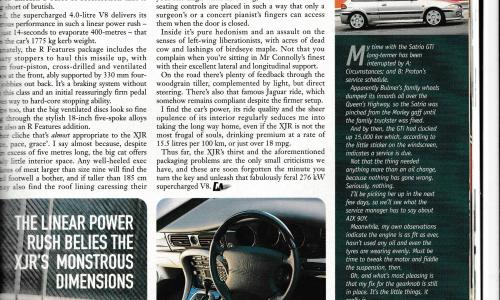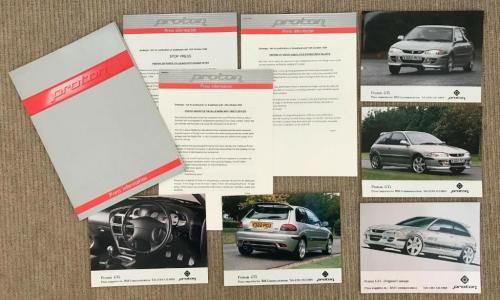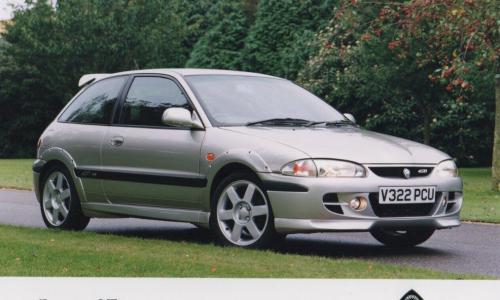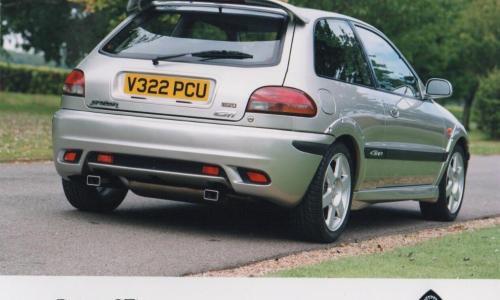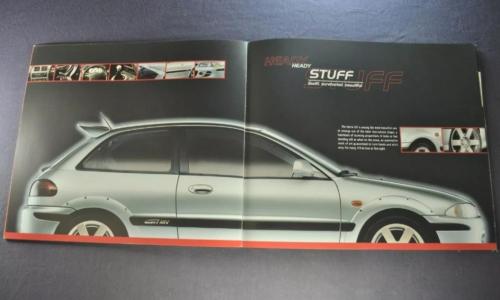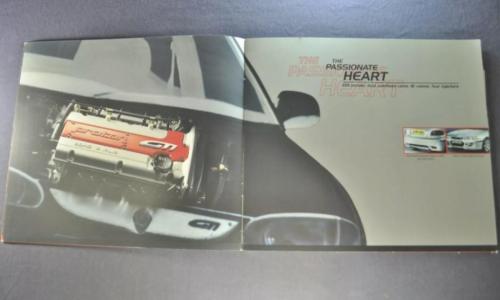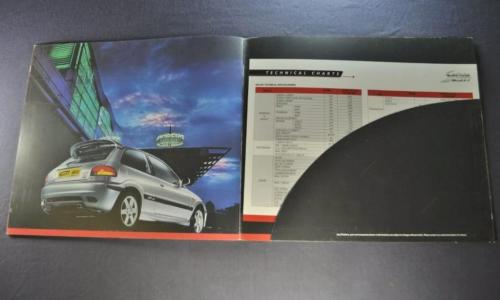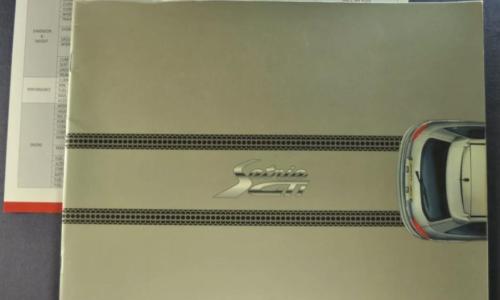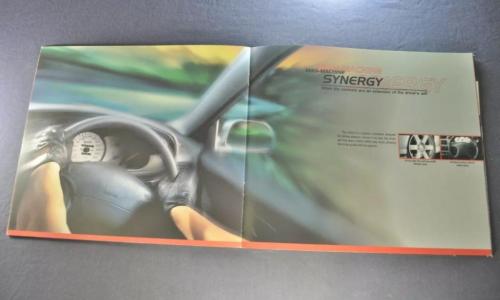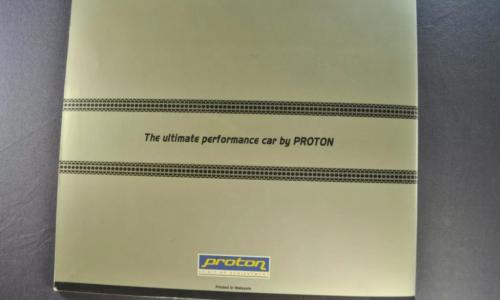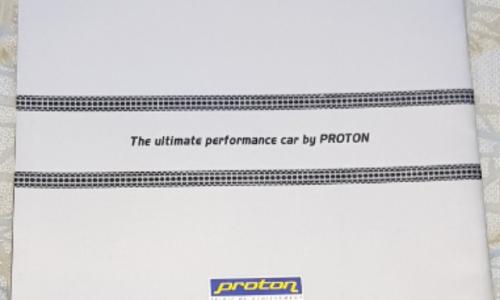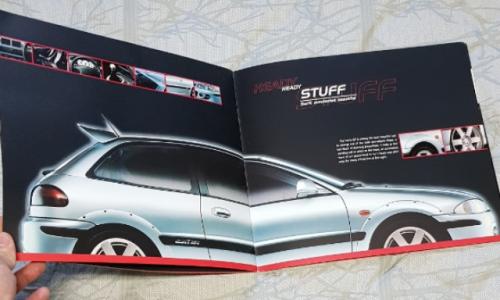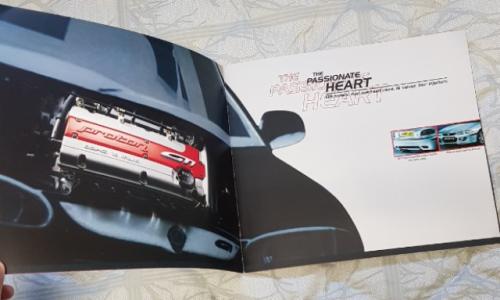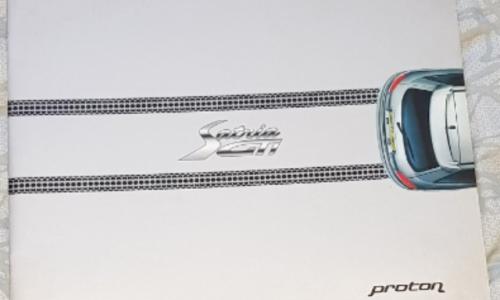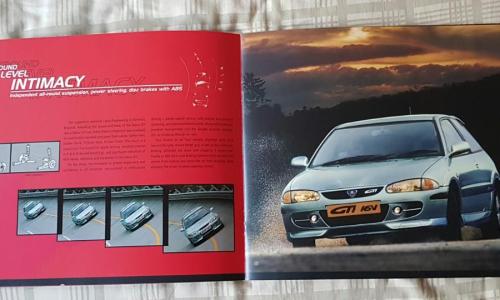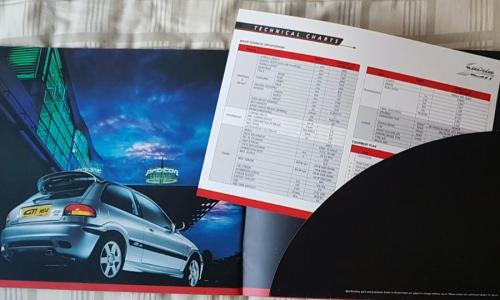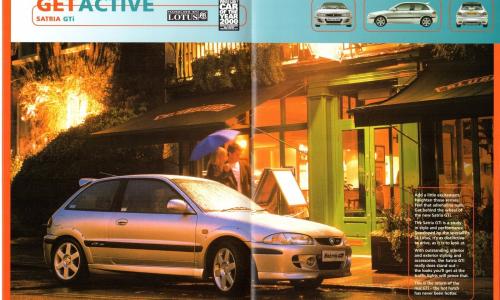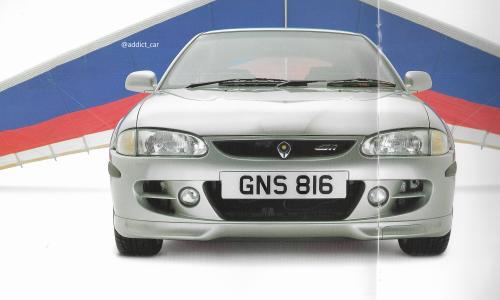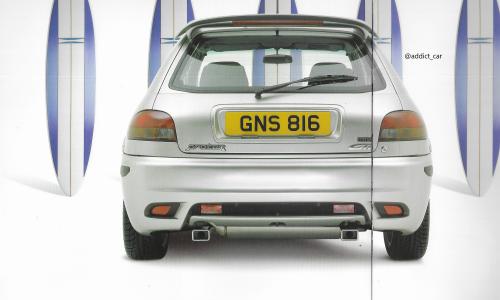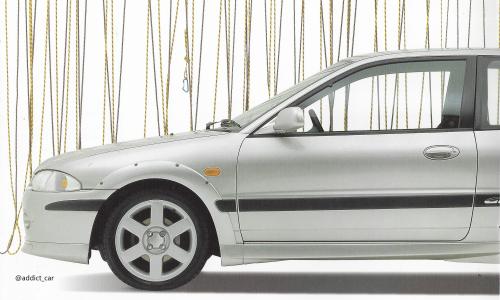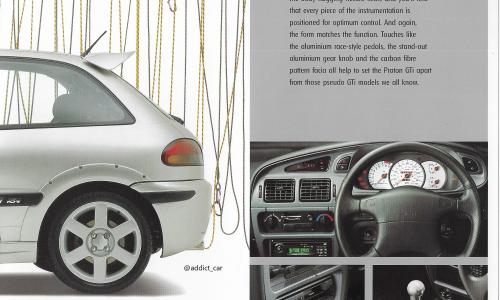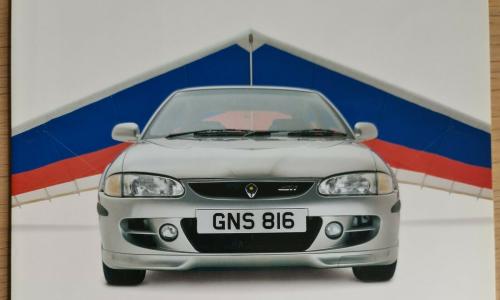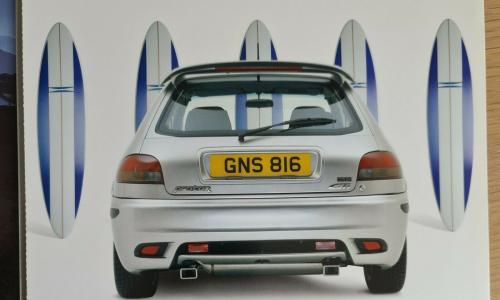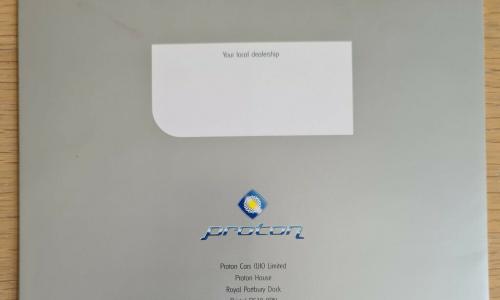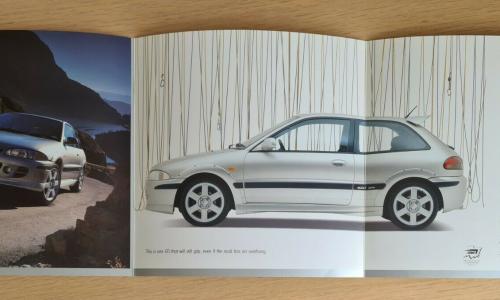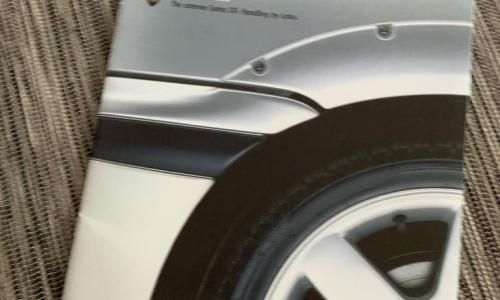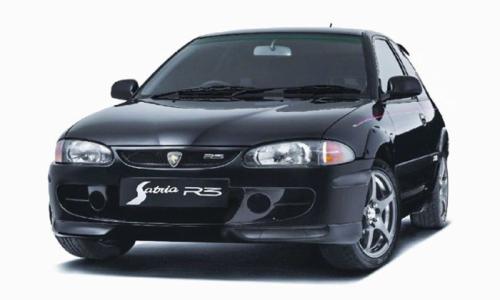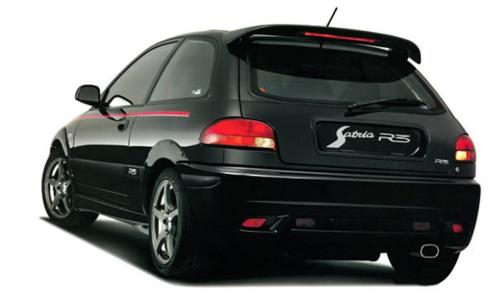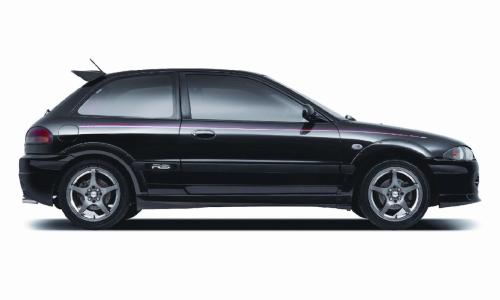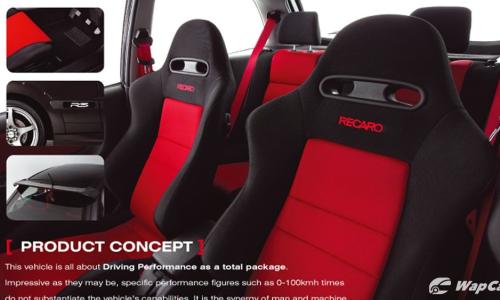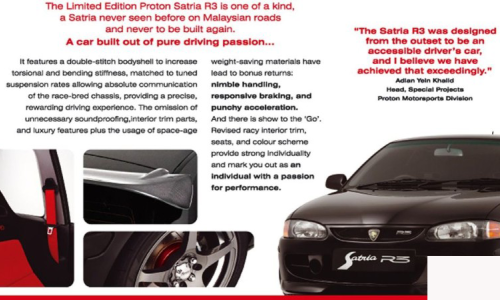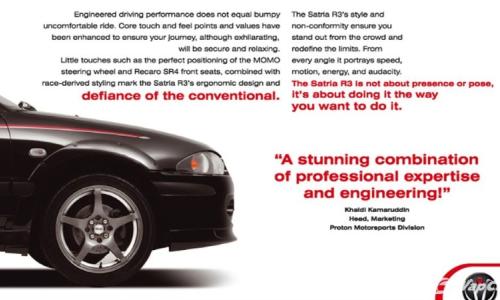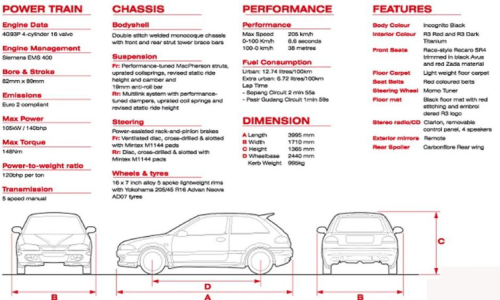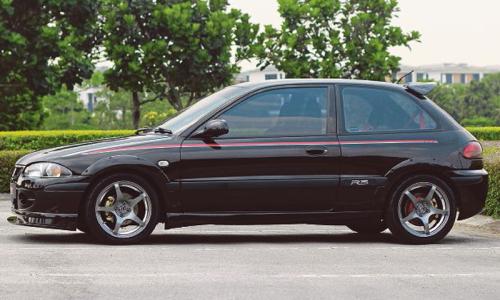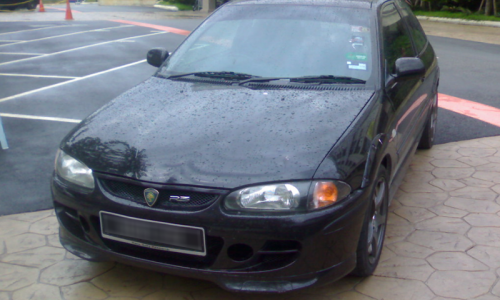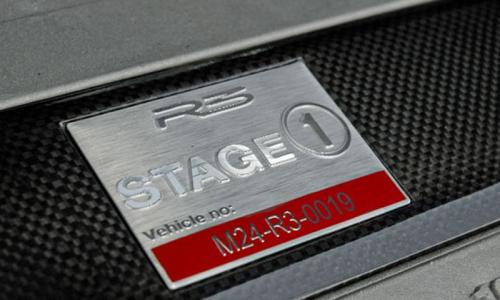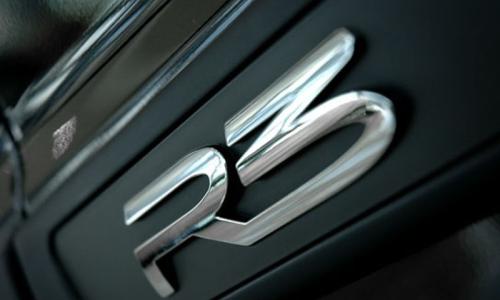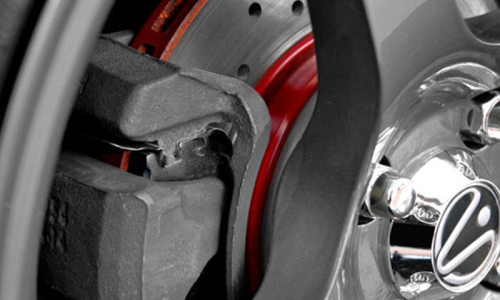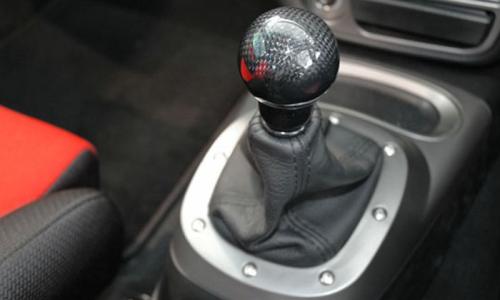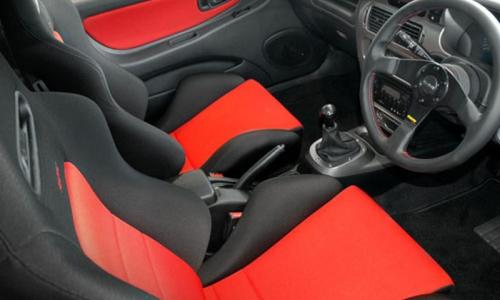INFO GUIDE: 1999 - 2005 Proton Satria GTi Hatch
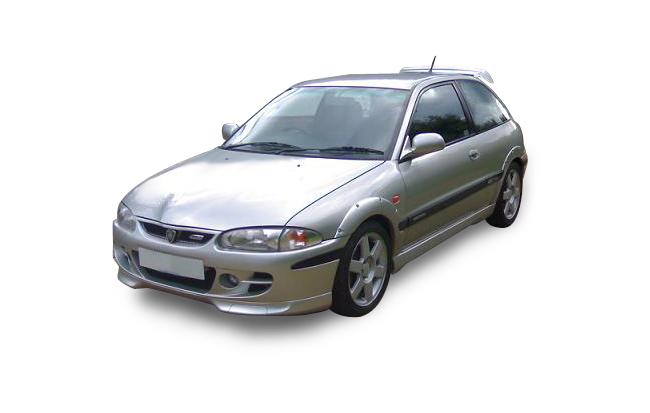
- Description
- 1. Exterior features - Proton Satria GTi
- 2. Interior features - Proton Satria GTi
- 3. Mechanical features & specs - Proton Satria GTi
- 4. VIN / chassis number and engine number - Proton Satria GTi
- 5. Documentation, Brochures, pop culture and interesting facts- Proton Satria Gti
- 6. Proton Satria R3
- 6. References - Proton Satria GTi
Description
This guide has been written for those seeking information, history and detailed specifications for the Proton Satria GTi (also known as the Proton GTi 180 in some markets). This legendary naturally aspirated hot hatch has developed a big enthusiast following in the small number of markets in which it was sold, so we thought it appropriate to consolidate the information available for the cars for the benefit of enthusiasts.
The Satria GTi (which was based on the fourth generation Mitsubishi Mirage / Colt chassis) was substantially different to its base model counterpart, having been re-engineered by Lotus in the UK, which at the time was owned by Proton. Lotus made numerous aerodynamic and handling improvements to the car, which won over motoring journalists and tuners. Further adding to the car’s desirability was the fact that it featured the 1.8 litre 4G93P engine (a non-turbo higher compression version of that found in the Lancer GSR). This engine matched the car’s performance to its handling, and provided a fantastic base for tuners and weekend racers. Its popularity with tuners and entry level motorsport has unfortunately resulted in many of the cars having hard lives and many have been lost over the years. This is great news for parts availability, but has meant that original complete units are rather thin on the ground: this is part of the motivation for writing this guide.
The Proton GTi’s competitors arguably include the Peugeot 206 GTi, the Nissan Pulsar SSS, the Honda Civic VTiR, the Ford Focus ST, the Ford Fiesta XR4 and the Renault Clio 2.0 16v Sport. The Satria GTi was a special car because it came out of nowhere from the non-mainstream brand Proton, which in the competitive UK and Australian markets was not particularly well known at the time.
Production and markets:
The Satria GTi was built from 1998 – 2005, and was first offered as a 1999 model year car. The car was offered in four major RHD markets including Malaysia, Singapore, UK and Australia. A special edition “LE” model was also produced with some additional features (such as leather trim). Only 20 units were delivered to Australia (and an unknown number to other markets). Unfortunately, it wasn’t offered in New Zealand, where we personally think it would have been a hit. It was offered in very limited numbers in some European markets (Germany being one of them), where it was known as the “Proton GTi” or the GTi 318 (and never wore the “Satria” badge).
In the UK the Satria GTi retailed at £14,500. In the Australian market, the GTi retailed for between $28,990 (according to Motor Magazine of April 2002) and $26,990 (based on numerous Wheels magazines from 2004 – 2005).
We have not been able to confirm total production numbers for the Proton Satria GTi. The only record of sales we have seen is confirmation that 160 units were sold in the UK market in the first 6-months after launch. Based on some forum discussion, we make a (guess) that export markets (UK & Australia in particular) would have received around 5,000 GTis in total. Presumably the Malaysian domestic market was much larger, given that there seem to be many GTis available on Malaysian car sale websites at the time of writing this guide. Conversely, looking on sales sites in Australia and the UK, numbers are really dwindling, and most ads are parts only.
On the outside the GTi was one of the most outspoken sports hatches in its class, with a distinct body kit, wheels and a great stance. All GTis were finished in a silver grey paint colour (code AC16930). A sticker confirming the paint code was mounted on the car's bulkhead (an example is shown in the image gallery).
- Body kit:
A body kit was designed and fitted by Lotus to achieve better aerodynamics. Features included:
- Distinct wheel arch flares with exposed bolts, which connected to a sculpted side skirt panel.
- Front and back sports bumpers/splitters: The front bumper integrated large air dams and fog lights, the back integrated rear fog lamps (inboard mounted) and reflectors (outboard mounted).
- Unique twin “square” exhaust tips exit either side of the rear splitter.
- A large rear spoiler was fitted to the tail gate. On the rare “LE” models, a small spoiler was also added below the rear window.
- A sunroof was optional.
- Badging:
We have sighted several inconsistencies and changes with the GTis badging based on observing cars from different years and in different markets. We note the following badging observed on various cars:
- Proton badge fitted to LHS of the rear hatch.
- 'Handling by Lotus' badge fitted to RHS of the rear hatch.
- Early cars appear to have (from top to bottom on the rear RHS of the hatch) “GTi”, over “16V” over “Handling by Lotus”. Sighted on cars 1999 – 2000 so far.
- Late UK cars appear to have simply “GTi” over ”Handling by Lotus”
- Later cars had “Satria” over “GTi” over “Handling by Lotus” (Australian cars appear to always have this - with the exception of early cars).
- Precise positioning of badging appears to be inconsistent. Some are positioned higher/lower than others. We presume this is factory error rather than aftermarket changes applied by owners.
- Some GTis have “Proton” also on the front doors rub strip – this appears to be on some of the UK cars. We have not sighted it on many
- Rare “LE” models also had LE badging on the rear tail gate.
- Wheels
- All GTis were fitted with 6-spoke 6.5J x 16 ET46 wheels. These had a stud pattern of 4 x 100.
- Tyres fitted were originally Pirelli 205/45R16 83V P7000.
- General
- Green window tint.
- Rear centre-mounted “bee-sting” antenna.
- All cars were fitted with Recaro front seats, and the rear seats were trimmed to match. The vast majority of GTis had black bolsters with grey/silver trim applied to the middle of the squab and back. The seats had “Recaro” embroidered in the centre back rest.
- The rare “LE” model had the Recaro seats trimmed in dark grey / black leather, and the rear seats trimmed to match. This model also had a leather door card insert panel with “GTI” embroidered in white. Just 20 of these cars came to Australia. These cars had a build number plaque fixed to the passenger side of the dash (refer to last 4 images in the gallery for examples of trim and the plaque).
- The dashboard fascia was a silver finish.
- Leather steering wheel.
- Blue text and white background instruments
- In 1999 - it was equipped with air-conditioning, ABS, dual front power windows (prone to break), electric mirrors and Recaro seats
- Airbag was introduced later. Unclear when.
- Later cars got nice carpet with GTi logos. Door panels, steering wheel and pedals also got GTi logo, and there was a revised gear knob.
- Cut-pile floor carpet and carpet mats with GTi logo
- Stainless steel door sill scuff plate garnish
- high-quality audio system with CD-player and six speakers
- aluminium racing-type foot pedals
- Leather gear shift boot
- Centre console with carbon check finish
- Aluminium gear shift knob
- 4 spoke steering wheel with driver airbag
- Titanium dial fascia meter cluster
In this section of the guide we detail the mechanical specifications for the Satria GTi. This section includes details of the change to the engine Electronic Control Unit (ECU), which in early cars was a Mitsubishi (MMC ECU), and in later cars was a Siemens ECU. Please note, power specs may differ to those quoted below as a result of the ECU changes. If you have further information / clarity on the power specs, please do get in touch.
Engine and performance specs:
- Inline 4-cylinder 1.8l (1834cc) DOHC 16-valve non turbo
- Compression ratio: 10.5:1
- Nore / Stroke: 81mm x 89mm
- Power:
- 103kw @ 6,000 RPM & 164Nm torque at 5,500 RPM (non-emission controlled).
- 99kw @ 6,500 RPM & 162Nm torque at 5,500 RPM (emission controlled markets including UK).
- 0-100 km/hr: 7.8 seconds (early MMC ECU cars); 8 - 9 seconds: Later Siemens VDO ECU cars).
- Top speed: 210km/hr (MMC ECU); 190km/hr (Siemens VDO ECU).
- Fuel economy: 6.6l/100km.
- Fuel tank capacity: 50 litres.
- Gearbox ratios:
- 1st: 3.083:1
- 2nd: 1.947:1
- 3rd: 1.285:1
- 4th: 0.939:1
- 5th: 0.756:1
- Reverse: 3.083:1
- Final drive: 4.322:1
Handling:
- All independent suspension. McPherson strut setup in front and multilink in the rear. Coil springs, dampers and stabiliser bars applied front and rear.
- Increased body rigidity due to use of foam filler in strategic areas.
- 14-inch servo power assisted disc brakes on all wheels, ventilated at the front.
- ABS brakes.
- 16 inch alloy wheels (6.5J x 16) with 45 series Michelin radial tyres - 204/45R16.
Dimensions:
- Height: 1,365mm.
- Width: 1,710mm (including wheel arches).
- Length: 3,995mm.
- Wheel base: 2,440mm.
- Turning circle: 5.6 metres.
Mitsubishi Motor Co ECU (MMC ECU) vs Siemens VDO ECU
One of the most confusing topics we discovered when researching the GTi is the ECU, and the changes that were made throughout production. There appears to be a big preference for the earlier MMC ECU cars, which have more power, higher top speed, and are supposedly more tuneable. Below we have summarised the difference between the ECUs based on our review of forum discussion, which will hopefully assist enthusiasts in understanding why there is so much talk about the ECU changes in the GTi.
1. MMC ECU
The MMC ECU was fitted to early GTis, up to some point in mid- 2001. We have not been able to confirm a precise changeover date, and there is some debate around it.
In 1999 cars, the MMC ECU was adapted to run without a catalytic converter. As a result, these very early non-cat cars are the best performers. For the 2000 model year, the MMC ECU was detuned slightly to meet emission standards for export markets (such as Europe and Australia), and ran with a cat converter and oxygen sensor. We presume that these cat-converter compatible MMC ECUs were the ones that delivered the performance specifications for the GTi that were quoted in most magazines at the time (i.e. 0-100 in 7.8 seconds, and a top speed of >200 km/hr).
These earlier MMC ECUs are often preferred by enthusiasts not only due to the greater factory power output, but also because they are considered simpler to modify by tuners.
The MMC ECU can be tuned with piggyback modifications. It is a simpler ECU which can be manipulated easily in comparison to the Siemens VDO ECU. The MMC ECUs use a mass air flow sensor to read the incoming air charge. Based on the air charge, it determines the injector duty cycle. Therefore, if you plug in higher flow injectors, your engine will run richer all the time. Plug in lower flow injectors, and your engine runs leaner all the time (i.e. the injector cycle is static despite the change). Tuning on this sort of ECU involves only the manipulation of mass air flow output. By altering the mass air flow signal provided to the ECU, it fools it into using a different injector duty cycle, which can be used to get more from the engine.
2. Siemens VDO ECU
This ECU is believed to have been fitted to cars from late 2001, through to the end of GTi production. Again, this is the subject of some debate.
This ECU has received criticism as it reduced the GTi's factory performance specifications (0-100 in 8 seconds or slower, and top speed dropped to about 190km/hr or less). The engine's redline with this ECU also dropped from 7,500 to 6,500rpm.
The Siemens ECU is considered a 'smarter' and more modern ECU in comparison to the MMC ECU. However, that has also resulted in it being more difficult to modify because it does not respond to 'piggyback' modifications like the earlier MMC ECU. This ECU can be modified, but according to forum discussion it is a bit more difficult to do.
Unlike the MMC ECU, the VDO ECU uses the lambda sensor for closed-loop operation at idle and up to around 3,500rpm. Within this closed loop system, the injector duty cycle is based on the air-fuel ratio. So if you want to tune the VDO ECU up to 3,500rpm, you need to intercept the lambda sensor value. From 3,500rpm upward, it uses a MAP sensor that uses manifold vacuum to determine airflow. The VDO ECU goes into an open loop mode similar to older ECUs and you will need to alter the MAP sensor signal to alter performance.
The Siemens VDO ECU has the added advantage of a built-in knock sensor that ties back to the ignition advance mechanism. Therefore, engine knocking due to a lean mixture can be mitigated by the Siemens VDO ECU which will compensate by enriching the fuel mixture.
There are some great comments at the following link where most of the above information was sourced:
https://forum.lowyat.net/topic/834280/+60
Chassis/VIN number:
The Satria GTi has a 17-digit vehicle identification number commencing with the prefix "PLIC99MNR"
The VIN is located on a factory VIN plate, positioned on the central bulkhead, affixed with two rivets. The same VIN also appears stamped into the bulkhead to the left of the VIN plate.
Engine number:
The Satria GTi is fitted with the 4G93P engine. This code, and the unique engine number that follows it, is stamped into the front right of the engine block, directly below the radiator hose connection. The "4G93P" code is also noted on the VIN plate riveted to the central upper bulkhead.
Model code sticker:
A silver reflective sticker was also affixed to the upper bulkhead with "Proton" printed above the GTi model code "C99" and the engine code "4G93".
Advertising and brochures:
The GTi's links to Lotus, and an emphasis on its handling were the main points pushed in the car's advertising campaigns, and we have attached several examples from prominent magazines - particularly Australian magazines from the early 2000s (Wheels Magazine and Motor Magazine). Additions are always welcome - please click "contact author" at the top of this page to get in touch with us if you have further details or other original documentation which you think will benefit this guide.
Pop culture:
The GTi was seen as a very young person's car at the time, mainly appealing to late Gen X and Gen Y consumers. The GTi was a very popular tuners car, but somewhat seen as a poor man's sports car. The ultimate demonstration of how the GTi was viewed is probably summed up by its appearances in the Australian TV series "Fat Pizza". Interestingly, both the Malaysian and UK police forces used Proton GTis as token patrol cars. Examples of both cars are shown in the image gallery.
Related to the Satria GTi (but a separate model) was the R3 (R3 derived from "Race, Rally, Research"). This was a special edition model that we thought worth mentioning in this guide, as it is generally viewed by by enthusiasts as a run-out model for the Satria GTi.
There were only 150 of the first Generation R3s built. They utilised the same 1.8l Mitsubishi sourced engine as used in the GTi, but there were significant differences between the cars, which focussed heavily on weight reduction and handling. The following list of features / modifications were applied to the R3 cars (note, this list mainly covers the Stage 1 R3). The R3 also had stage 2 and 3 versions which had more significant upgrades to the power train and chassis.
- A new free-flow exhaust system (helping to produce 140 bhp (105 kW) and 168 nm of torque).
- Top speed of 205 km/h, with a 0-100 sprint of 8.6 seconds.
- A five-speed manual transmission was fitted to all cars (same as the GTi).
- The body was double stitch welded (i.e. welded twice for increased structural rigidity),
- Front and rear suspension strut braces were fitted as standard.
- Suspension improvements included uprated springs and dampers, thicker anti-roll bars and lower ride height.
- ABS brake system was removed, and cross-drilled and slotted DBA (Disc Brake Australia) discs were fitted all round. M1144 series brake pads were supplied by Mintex Racing.
- All sound-deadening material and driver's airbag were removed to bring weight down to just 995 kg. Cars were fitted with light-weight carpet only.
- Inside, a Momo "Tuner" steering wheel was fitted, a carbon fibre gear knob, titanium effect dash trim and Recaro SR4 seats.
- The interiors of all cars were trimmed in black and red fabric, with the seatbelts also finished in red.
- Lightweight 16 inch Advanti alloy wheels were fitted standard. These are a 5-spoke design with a gun metal finish, and are fitted with Yokohama Advan 205/45 R16 AD07 tyres.
- A carbon fibre roof spoiler was applied.
- The headlamps had a smoked finish applied
- The car was painted "Incognito Black" with signature red and silver stripes on the sides. Only 150 units were ever produced.
A big thanks in this section to the information and images from the following link: http://www.zerotohundred.com/forums/threads/retreat-review-r3-satria.3953/, paultan.org and wapcar.my.
The following links / sources have been used in the drafting of this guide:
https://art-s.tripod.com/gti/gtipage.html
http://marquenews.com.au/satria-gti-gets-added-value/
